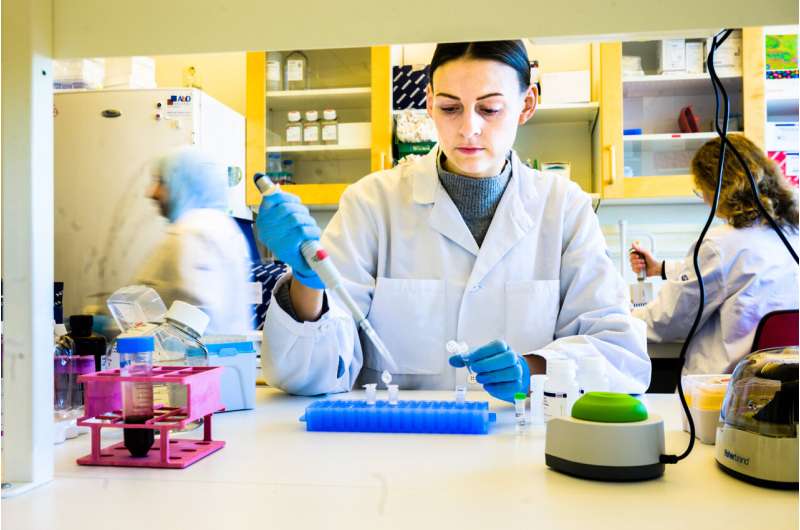This article has been reviewed according to Science X's editorial process and policies. Editors have highlighted the following attributes while ensuring the content's credibility:
fact-checked
trusted source
proofread
Post-COVID syndrome visible in DNA, shows study

A reprogramming of which genes are active, and which are not, is visible in post-COVID sufferers. This is shown in a study from Linköping University, Sweden, on a small group of individuals. The researchers can see that genes associated with taste and smell, as well as cell metabolism, are affected in individuals with post-COVID syndrome. These findings may ultimately contribute to the development of new diagnostic tools for this and similar diseases.
There are many external factors that can affect which of all the genes in a cell are used at a certain point in time. The body's ability to switch genes on and off contributes to our ability to adapt to various conditions. This gene use regulation is called epigenetics.
One of the regulation mechanisms entails that a small chemical group, a methyl group, is switched on and removed from the DNA strand. Reduced methylation of a gene may be a sign of it becoming easier for the cell to read and use, whereas high methylation most often means that the gene is not used. The researchers in Maria Lerm's research group at Linköping University have previously found that exposure to the tuberculosis bacteria is visible in individuals' DNA by looking at certain epigenetic changes.
In their new study, published in Clinical Epigenetics, the researchers studied blood samples from ten individuals having had persistent post-COVID symptoms for more than 12 weeks. The most common symptoms were a feeling of not being able to draw in enough air, palpitations, muscle weakness and loss of smell and taste.
These individuals were compared with two other groups: healthy COVID-19 convalescents, and individuals who had not had COVID-19 when the samples were taken. The researchers measured the methylation pattern on 850,000 sites of the DNA and then used an algorithm that can find data similarities and differences. It turned out that the three groups differed from each other and had distinct methylation profiles. The researchers then identified the genes that differ in methylation patterns between the groups.
"We have found that, for example, signaling pathways that control taste and smell have been affected. This confirms that the epigenetic differences may in fact be associated with the set of symptoms and be physiologically relevant," says Maria Lerm, Professor of Medical Microbiology at the Department of Biomedical and Clinical Sciences, BKV, at Linköping University.

A previous study conducted by the research group concerned individuals who had recently recovered from COVID-19 and who showed a similar epigenetic reprogramming of signaling pathways associated with taste and smell.
In their new study, the researchers also found epigenetic changes in what is known as the angiotensin-2 system in post-COVID sufferers. This could be biologically relevant as the coronavirus which causes COVID-19, i.e., the SARS-CoV-2 virus, uses the angiotensin-2 system to enter and infect cells.
One of several conditions similar to post-COVID is chronic fatigue syndrome, CFS, which is also known as myalgic encephalomyelitis, ME.
"One important finding is that we can see that the cells' energy factories, the mitochondria, are affected in the post-COVID group. Other studies have shown that the cells' energy factories have also been affected in cases of chronic fatigue," says Maria Lerm.
There is currently no test that doctors can use to decide whether a person has post-COVID syndrome. The researchers are hoping that their recent findings can contribute to the development of diagnostic tools for health care providers, tools that might perhaps even make it possible to distinguish post-COVID from similar conditions.
More information: Frida Nikesjö et al, Defining post-acute COVID-19 syndrome (PACS) by an epigenetic biosignature in peripheral blood mononuclear cells, Clinical Epigenetics (2022). DOI: 10.1186/s13148-022-01398-1

















